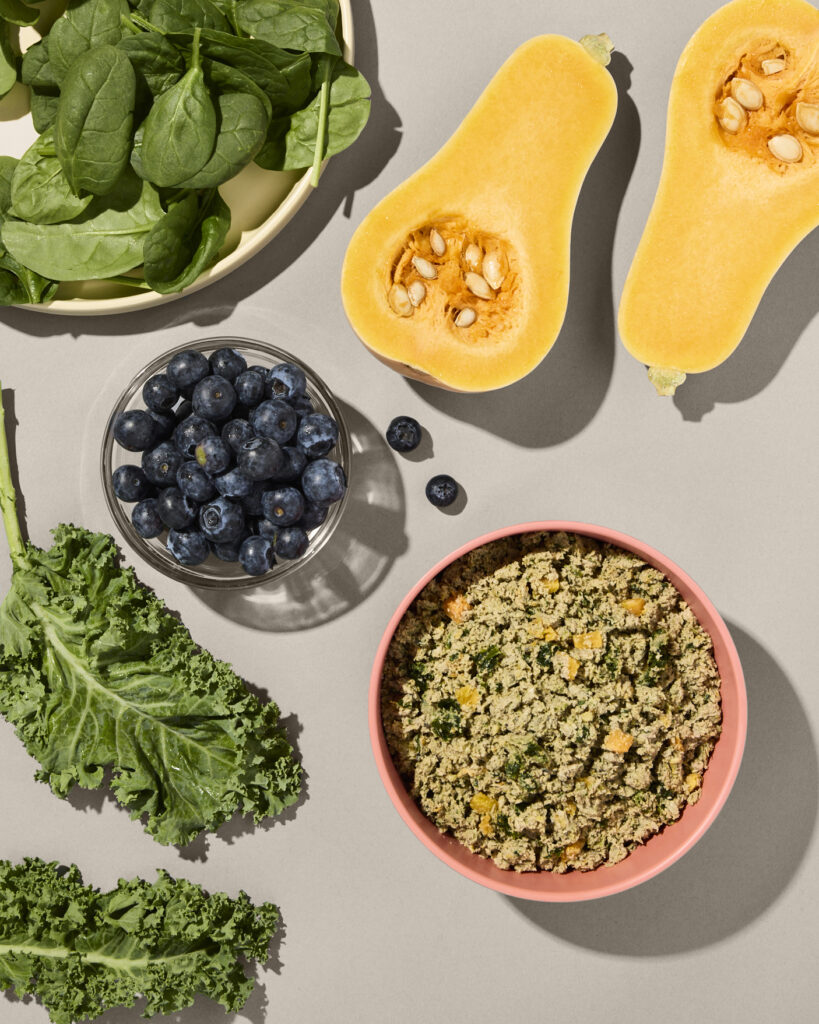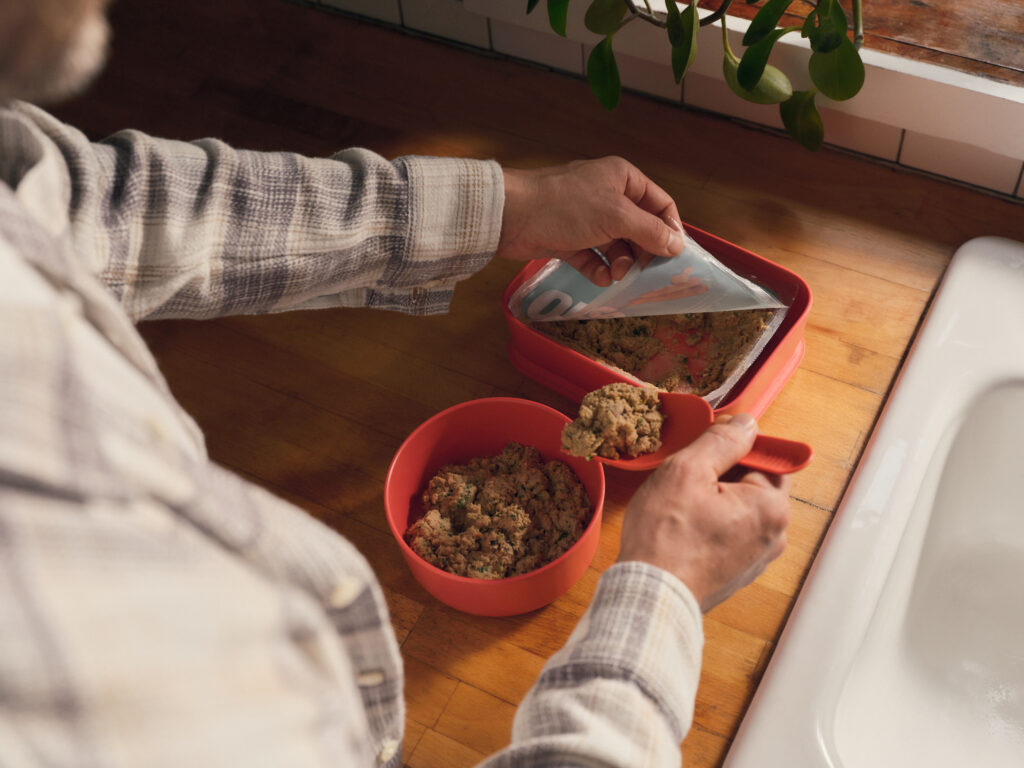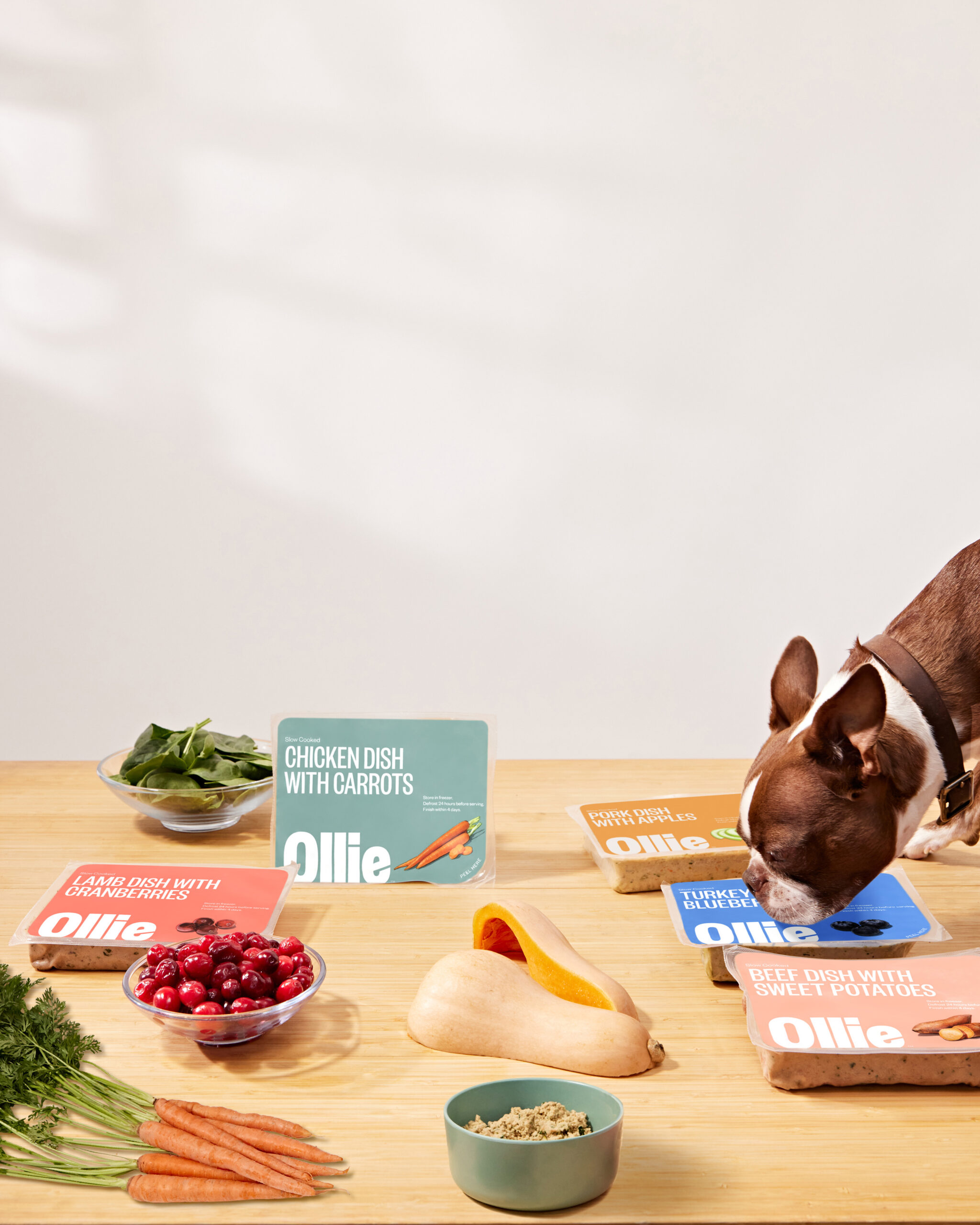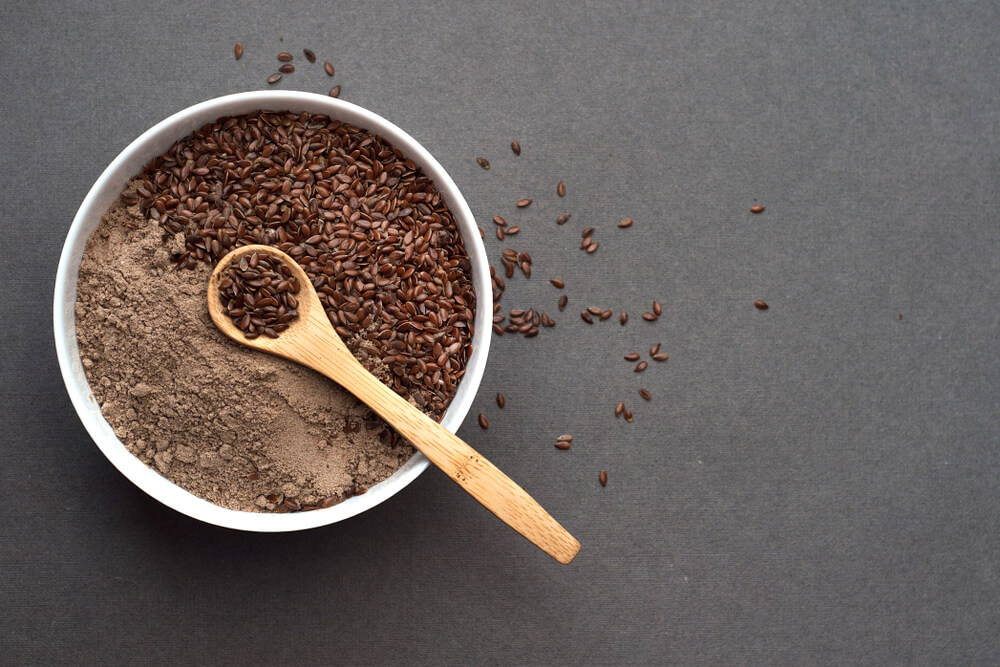Hey Ollie blog readers! We’re offering you an exclusive 60% OFF your starter box! Try now!
As pet parents become more conscious about what goes into their dog’s food bowl, many are considering alternatives to traditional kibble. Two increasingly popular options are fresh dog food and homemade meals. Both promise nutritional benefits, but they differ significantly in preparation, nutritional balance, safety, and convenience. This article explores the key differences between fresh and homemade dog food to help you make an informed decision for your pup’s diet.
Understanding Fresh Dog Food
Fresh dog food has become increasingly popular among health-conscious pet parents looking to provide their dogs with high-quality nutrition. But what exactly qualifies as “fresh” dog food?
What Defines Fresh Dog Food
Fresh dog food typically refers to minimally processed food made primarily from ingredients you’d recognize from your grocery store, such as chicken, beef, carrots, and other whole foods. These foods generally don’t contain preservatives and undergo gentle cooking or minimal processing to maintain nutritional integrity while ensuring safety[1].
The hallmarks of fresh dog food include:
- Absence of artificial preservatives
- Recognizable, whole-food ingredients
- Minimal processing or gentle cooking methods
- Visible, identifiable ingredients
- Added vitamins and minerals to ensure complete nutrition
Fresh dog food often requires refrigeration or freezing to maintain its quality and safety, though some varieties undergo special processing that makes them shelf-stable while preserving their nutritional benefits[1].
Types of Fresh Dog Food
- Refrigerated or frozen fresh food
- Shelf-stable varieties processed under high pressure
- Dehydrated dog foods that require rehydration
- Air-dried or freeze-dried options
Many fresh dog food companies, including Ollie, deliver pre-portioned meals directly to your door, taking the guesswork out of feeding your dog a balanced diet.
Homemade Dog Food: Benefits and Challenges
Potential Benefits of Homemade Diets
- Select high-quality proteins, vegetables, and grains
- Avoid ingredients your dog may be sensitive to
- Adjust recipes based on your dog’s preferences
- Know exactly what’s going into your dog’s bowl
For dogs with specific health conditions or allergies, a carefully crafted homemade diet might seem like an appealing option.
Significant Challenges with Homemade Preparation
- Nutritional imbalance is common in homemade diets
- Creating a complete and balanced meal requires extensive knowledge
- Preparation is time-consuming and labor-intensive
- Storage and food safety concerns must be addressed
- Cost can be higher than expected when accounting for all necessary ingredients
The Merck Veterinary Manual warns that “Most homemade diets do not undergo the scrutiny and rigorous testing applied to commercial complete and balanced diets”[2]. Without proper formulation guided by a veterinary nutritionist, homemade diets risk nutritional deficiencies that could harm your dog’s health over time.

Nutritional Considerations: Fresh vs. Homemade
Nutritional Balance
Fresh dog food from reputable companies is formulated with veterinary nutritionists to meet the Association of American Feed Control Officials (AAFCO) standards, ensuring your dog receives all essential nutrients in the proper amounts[2]. These diets are scientifically formulated to provide complete nutrition while still offering the benefits of minimally processed ingredients. In contrast, homemade diets often lack key nutrients unless they’re carefully formulated by a professional. Even well-intentioned pet parents may inadvertently create imbalanced meals that could lead to nutritional deficiencies over time[1].
Quality Control and Safety
Commercial fresh dog food undergoes quality control measures to ensure safety and nutritional consistency. For example, Ollie prepares their recipes in USDA-regulated kitchens, with ingredients sourced from reputable farms and approved by veterinarians[2]. Homemade diets lack these standardized quality controls, potentially increasing the risk of foodborne illness or nutritional inconsistency. Without proper handling, storage, and preparation, homemade foods may pose safety risks to both pets and humans in the household[3].
Safety Considerations Between Options
Bacterial Contamination Risks
Both fresh and homemade dog foods require proper handling to minimize bacterial contamination risks. However, commercial fresh dog food undergoes safety protocols to reduce these risks, including gentle cooking that eliminates harmful bacteria while preserving nutritional value[1].
Homemade diets, particularly raw ones, carry a higher risk of bacterial contamination. Fresh pet foods, home-cooked diets, and raw diets are at a much greater risk of bacterial or parasite contamination compared to commercially processed options[3].
Processing and Preservation Methods
- Gentle cooking at low temperatures
- Small-batch preparation
- Proper packaging and storage guidelines
- Testing protocols to ensure quality and safety
Commercial fresh dog food uses controlled processing methods to ensure safety while maintaining nutritional integrity.
Convenience and Time Commitment
Preparation Time
- Homemade dog food requires shopping for ingredients, preparing, cooking, portioning, and storing meals regularly
- Commercial fresh dog food arrives ready to serve or requires minimal preparation
As noted in expert sources, “cooking for your pet is a process that’s demanding on your time, space, and finances”[2]. This time commitment can become burdensome for busy pet parents.

Storage and Serving
Both options require refrigeration or freezing, but commercial fresh food often comes with clear storage guidelines and pre-portioned servings. Ollie, for instance, calculates the exact number of calories your dog needs based on weight, spay/neuter status, and activity level, then pre-portions meals accordingly[2]. Homestyle food requires you to determine proper portions and manage storage yourself, which can be challenging without specialized knowledge.
Cost Comparison
Ingredient Costs
- Homemade food requires purchasing individual ingredients, which can be costly when accounting for all the components needed for balanced nutrition
- Commercial fresh food may seem expensive upfront, but often includes all necessary nutrients without requiring separate supplements
Long-term Value Consideration
- Properly balanced nutrition may contribute to fewer health issues over time
- The convenience of pre-portioned, delivered meals saves time and effort
- The peace of mind knowing your dog’s diet is nutritionally complete
Expert Recommendations
Veterinary Perspectives
Veterinarians typically prefer fresh dog food over raw diets, primarily due to safety concerns[1]. When it comes to homemade versus commercial fresh food, veterinarians generally recommend commercial options that follow AAFCO guidelines to ensure nutritional completeness[1].
If you’re determined to prepare homemade food, experts strongly recommend consulting with a veterinary nutritionist. The Merck Veterinary Manual advises, “If pet parents wish to feed their pets homemade diets, the diets should be prepared and cooked using recipes formulated by a veterinary nutritionist”[2].
Making the Right Choice for Your Dog
Factors to Consider
- Your dog’s specific nutritional needs and health conditions
- Your time availability for food preparation
- Your budget for pet food
- Your knowledge of canine nutrition
- Your dog’s preferences and palatability concerns
Finding the Right Balance
- Using a reputable fresh dog food service like Ollie that provides nutritionally balanced meals
- Supplementing with occasional homemade treats under veterinary guidance
- Focusing on quality rather than preparation method
Frequently Asked Questions
Is fresh dog food worth the higher cost compared to kibble?
Fresh dog food offers benefits like high-quality ingredients, minimal processing, and excellent palatability. Many pet parents report improvements in their dogs’ overall well-being, including better digestion, healthier coats, and increased energy levels[2]. While more expensive than kibble, the potential health benefits and peace of mind regarding ingredient quality make it worthwhile for many pet parents.
Can I mix homemade food with commercial fresh dog food?
Yes, but with caution. Mixing foods can disrupt the nutritional balance of a complete diet. If you want to supplement commercial fresh food with homemade items, consult your veterinarian to ensure you’re maintaining proper nutritional balance.
How do I transition my dog to fresh food?
Transition gradually over 7-10 days by mixing increasing amounts of fresh food with decreasing amounts of your dog’s current diet. This slow transition helps prevent digestive upset. Many fresh food companies, including Ollie, provide specific transition guidelines with their meals.
How long does fresh dog food last in the refrigerator?
Commercial fresh dog food typically lasts 4-7 days in the refrigerator after opening, though this varies by brand. Always check the manufacturer’s guidelines. Homemade dog food generally should be used within 3-4 days when refrigerated properly.
Is fresh dog food appropriate for puppies?
Yes, many fresh dog food companies offer formulations specifically designed for puppies’ unique nutritional needs. These recipes provide the higher protein and calorie content puppies require for healthy growth and development. Always choose a puppy-specific formula that meets AAFCO standards for growth and development.
The decision between a fresh commercial diet like Ollie and homemade dog food ultimately depends on your specific circumstances and your dog’s needs. By understanding the differences in nutritional quality, safety, convenience, and cost, you can make an informed choice that supports your dog’s health and wellbeing for years to come.
Citations
[1] https://www.petmd.com/raw-vs-fresh-dog-food
[2] https://www.akc.org/expert-advice/nutrition/fresh-raw-kibble-dog-food/
[3] https://ocm.auburn.edu/experts/2019/04/151146-pet-food.php
Tagged As:

The nutrition your dog needs,
the food they want.

Enjoying our articles? Subscribe our Newsletters and get new articles directly to your inbox
You might also like
18 September 2025
6 MINS READ
Can Dogs Eat Flaxseed? Is Flaxseed Safe For Dogs?
Wondering if flaxseed is safe for your dog? This guide breaks down the benefits, risks, and best ways to add flaxseed, or flaxseed oil, to your pup’s diet.
18 September 2025
6 MINS READ
Why is My Dog Not Eating But Acting Normal? Causes & What To Do
Worried your dog isn’t eating but still acting normal? Here’s what could be going on and what to do to help your pup get their appetite back.
18 September 2025
5 MINS READ
Can Dogs Eat Crab? Is Crab Meat Safe For Dogs?
Thinking about giving your dog crab meat? Find out if it’s safe, what risks to watch for, and when crab might do more harm than good.







